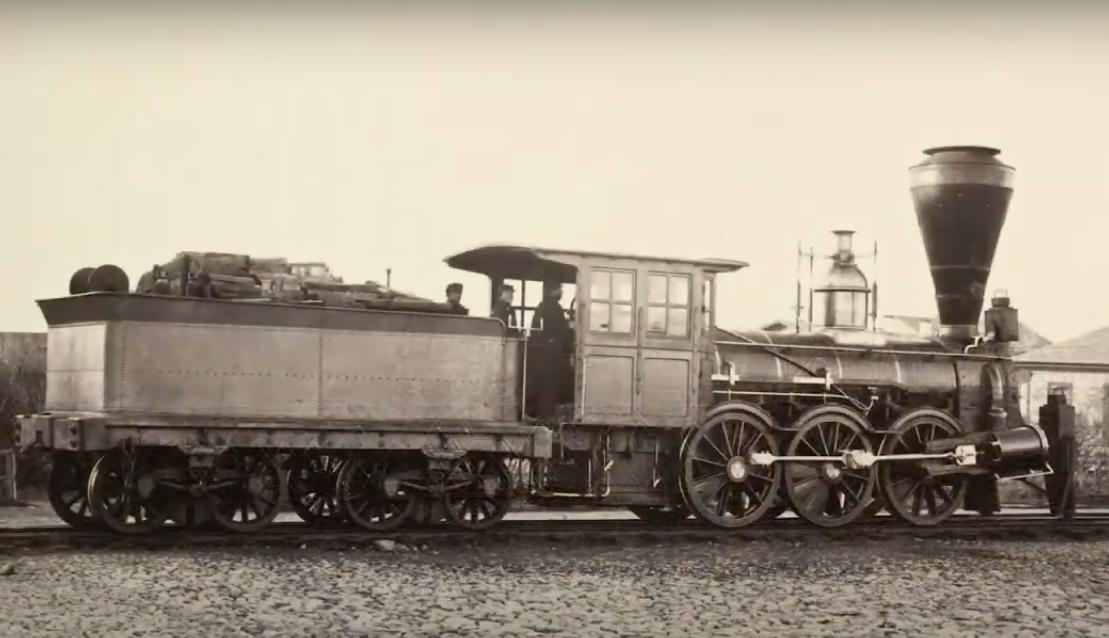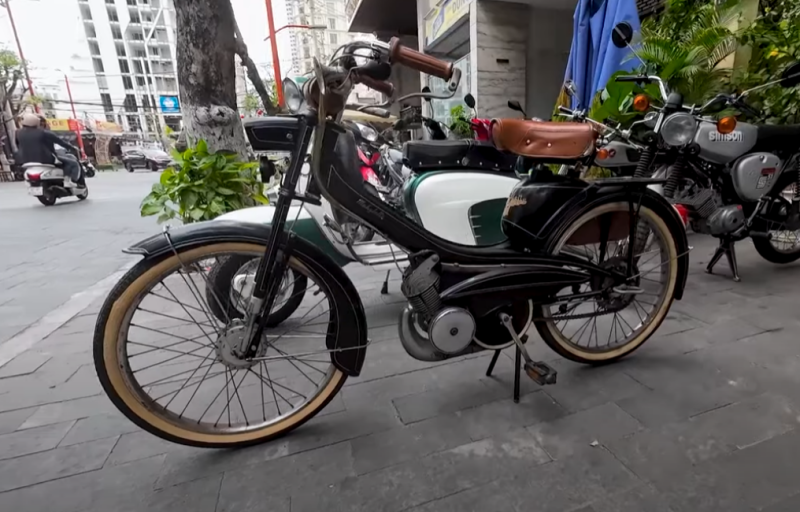"Land Dilijanets" - the first Russian steam locomotive
In feature films, the authors of the inventions are engineers with excellent education and academic degrees. But the history of the creation of steam-powered transport in Russia is connected with Yefim and Miron Cherepanov - father and son were serfs and worked in the mining empire of the Demidovs.
 Father and son Cherepanovs developed their steam locomotive almost from scratch. Photo: youtube.com
Father and son Cherepanovs developed their steam locomotive almost from scratch. Photo: youtube.comThey have lived all their lives in Nizhny Tagil. If before that all the men of the family worked in the mines, then Yefim's father was able to get him a job in the workshop. Thanks to his natural curiosity and love for technology, he became a master by the age of 20. At 33, he headed the repair department of one plant, and soon all nine enterprises located in the city were in his charge. On his initiative, a modern analogue of the design bureau was organized.
 Preserved drawings of the locomotive model. Photo: youtube.com
Preserved drawings of the locomotive model. Photo: youtube.comIn 1821, Yefim was sent to England to allegedly familiarize himself with the work of the mines there. In fact, the goal was banal industrial espionage, but the British did not show the drawings of the locomotive, he was forced to be guided only by external observations. After 12 years, Miron was sent, but he could not find out any details of the design of the equipment.
In their workshop, they have already created more than two dozen steam engines that pumped water, washed rock, were used in metal rolling, etc.
 It looked like the first model of Russian development. Photo: youtube.com
It looked like the first model of Russian development. Photo: youtube.comIn 1834, father and son began working on a steam wagon to carry ore. For this, the first depot was built, more like a barn, and rails were laid along the street. The process took about six months, I had to work on my own time, since no one released the Cherepanovs from their main duties.
At the beginning of September 1934, the steam locomotive set off for the first time. The local people met with amazement a huge machine with a tall smoking chimney. For this merit, Yefim was given a freestyle and was awarded a medal. After 3 years, Miron also became a free man.
The locomotive transported ore along a line a little over 850 meters long. But local clerks were not very happy with the technique, as it took away bread from the carriers and required a certain qualification of the personnel.
 Even a small video of the operation of the Cherepanovs' steam locomotive has been preserved. Photo: youtube.com
Even a small video of the operation of the Cherepanovs' steam locomotive has been preserved. Photo: youtube.comWhen the equipment broke down, the authorities decided that it was expensive to repair it and returned the transportation by horses. True, it was a horse-drawn carriage, as they dragged carts along the rails. Three locomotives were not needed and just rusted in the field.
It was planned to deliver one of the units to St. Petersburg for an exhibition, but something went wrong. As a result, for the first passenger line, imported equipment was bought at 47,5 thousand, while the domestic model cost only one and a half.
First railway
No matter how strange it may sound, but the railway route in Russia appeared much earlier than the first train. And this despite the fact that the Cherepanovs managed to create a fairly reliable model. This was largely due to the fact that at that time foreign technology was considered better than domestic and no one even wanted to consider the option created by the serfs.
 Picture of the first trip along the Tsarskoye Selo road. Photo: youtube.com
Picture of the first trip along the Tsarskoye Selo road. Photo: youtube.comThe history of the railroad began in 1834, when it was decided to build tracks from St. Petersburg to Tsarskoye Selo. Later, they decided to increase the route to Pavlovsk, a suburban town located nearby. As a result, the total length was 27 km. The country's first railway bridge across the Obvodny Canal was also built. The Austrian engineer Gerstner supervised the work. It was on his instructions that the track gauge was made 1829 mm, and not 1435, as in Europe. He believed that this option is much better for creating steam locomotives and wagons.
 It was thanks to Gerstner that the construction of the first railway line in Russia began. Photo: youtube.com
It was thanks to Gerstner that the construction of the first railway line in Russia began. Photo: youtube.comAll components were purchased from abroad. The work was completed in the second half of 1836. At the end of September, a test trip was made between Pavlovsk and Tsarskoe Selo, using horse traction.
In early October, the first English steam locomotive arrived in Kronstadt, and on November 3 it was tested on the Pavlovsk-Bolshoe Kuzmino section of the track. Everything needed was purchased not only in Britain, but also in Belgium. In total, 6 pieces of equipment were purchased, which were equipped with 19 freight and 44 passenger cars.
 Photo taken shortly before the launch of the road. Photo: youtube.com
Photo taken shortly before the launch of the road. Photo: youtube.comEuropean models were used, upgraded for an increased gauge. The power of the power unit was 40 hp. He could pull several wagons at a speed of 42,5 km / h.
At the end of October 1837, part of the road from St. Petersburg to Tsarskoye Selo was opened. On the 30th at 14.30, the train set off on its first trip in a festive atmosphere. In addition to the founders of the project, there were representatives of the city authorities and Emperor Nicholas I himself. The train of eight cars reached its destination in 35 minutes, returned back in 27. It accelerated to more than 60 km, and the average speed was 51 km.
 A huge number of people looked at the first ride. Photo: youtube.com
A huge number of people looked at the first ride. Photo: youtube.comGerstner himself operated the locomotive on the first trip. After that, the train carried everyone along the route for 3 days. On weekdays, the train was horse-drawn, and a steam locomotive ran on weekends. Only from the beginning of April 1838 horses were no longer used at all. At the end of May, the second section of the road to Pavlovsk was opened, which is known for having a concert hall at the station, where Strauss and other famous musicians of that time performed.
 Pavlovsky railway station is a place of concerts and balls. Photo: youtube.com
Pavlovsky railway station is a place of concerts and balls. Photo: youtube.comMost of the equipment and components were bought abroad. Moreover, even coal was brought from England, since it was believed that Russian fuel was harmful to steam locomotives.
On May 15, 1938, the first permanent train schedule appeared. They started work at 9 am and drove until 22 pm. The interval between trains was from 3 to 4 hours. The path was single, so the locomotives departed from the final points at the same time and dispersed at the stations in the middle. The second track was put into operation in 1876, which reduced the travel time and made it safer.
 The current Vitebsk railway station was the place of departure of the train from St. Petersburg. Photo: youtube.com
The current Vitebsk railway station was the place of departure of the train from St. Petersburg. Photo: youtube.comThe line existed until January 2, 1900, then it entered the Moscow-Vindavo-Rybinsk road and was remade to a width of 1524 mm, which was standard for Russia.
As for the price of tickets, for the cheapest passenger seats in cars without springs and a roof, it was 40 kopecks. In the so-called "Sharaban" (3rd class) the cost was 80 kopecks. In the closed "Stagecoach" had to pay 1 r 80 kopecks. And in the most prestigious carriage "Berlin" 1st class - 2,5 rubles. This is not a cheap pleasure, at that time for 2 rubles you could take a bag of potatoes and 2,5 kg of pork.
The first serial steam locomotive
It all started with a workshop that was previously used in the mining industry. The Main Directorate of Communications organized a plant where graduates of the St. Petersburg Institute, which trained engineers in the transport sector, worked. Although the Cherepanovs made a steam locomotive long before that, work in 1844 began from scratch. The assembly was carried out almost around the clock by the light of lamps and torches.
 The first serial production of steam locomotives in Russia was established in this building. Photo: youtube.com
The first serial production of steam locomotives in Russia was established in this building. Photo: youtube.comAlready in the early spring of 1845, in the presence of a crowd of onlookers, the first model left the depot, which was subsequently marked with the letter "D" in honor of the engineer Dokuchaev, who led the project. It was an excellent technique for its time, surpassing the English locomotives both in terms of power and ease of operation.
 Only the exact model of the first steam locomotive has been preserved. Photo: youtube.com
Only the exact model of the first steam locomotive has been preserved. Photo: youtube.comThe first steam locomotive had a 1-3-0 formula, which had not been used by anyone before. You can distinguish it by the leading rear axle, located under the platform on which the driver was located. They also produced 0-3-0 models without front running wheels.
It was a large technique - the weight was 30 tons, and the diameter of the drive wheels was 137 cm, they did not have counterweights, so the course was uneven. The firebox was made of copper, and the pipes were made of brass. Firewood was used as fuel, since Russian coal was still afraid to be used, and English was expensive.
 It looked like a variant with a wheel formula 0-3-0. Photo: youtube.com
It looked like a variant with a wheel formula 0-3-0. Photo: youtube.comOn the first models, the driver and assistant were located in an open area. Later, a canopy appeared to protect against the weather, and then a full-fledged cabin - the locomotive acquired its familiar look.










